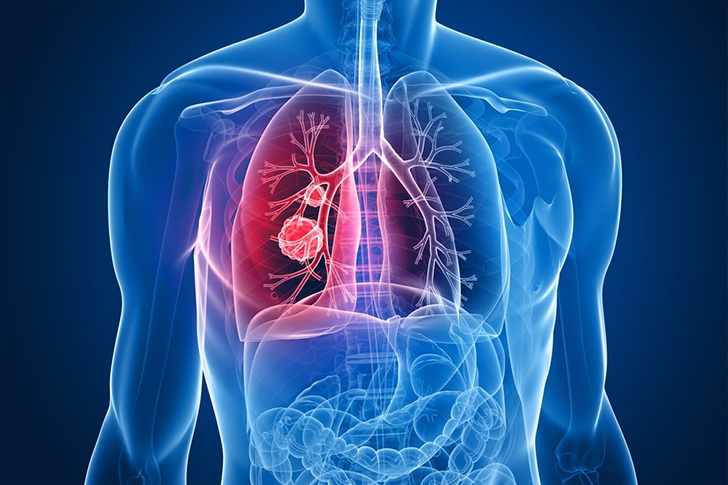Understanding Lung Cancer: Key Facts You Should Know
Lung cancer is the second most common cancer in the United States, yet it remains one of the most deadly. Despite advancements in treatment, lung cancer is responsible for more deaths than any other cancer. This article aims to provide crucial information about lung cancer, including its causes, symptoms, risk factors, and treatment options.

Key Facts About Lung Cancer
- Types of Lung Cancer
- Non-Small Cell Lung Cancer (NSCLC): The most common type, accounting for about 85% of all cases.
- Small Cell Lung Cancer (SCLC): Less common but more aggressive, making up about 15% of cases.
- Causes and Risk Factors
- Smoking: The leading cause of lung cancer, responsible for 80-90% of cases.
- Secondhand Smoke: Exposure to secondhand smoke increases the risk of lung cancer by 20-30%.
- Radon Exposure: Radon is a naturally occurring gas that can cause lung cancer. It is the second leading cause in the U.S.
- Asbestos: Occupational exposure to asbestos fibers increases the risk of lung cancer.
- Genetic Factors: A family history of lung cancer can also increase risk.
- Symptoms of Lung Cancer
- Persistent cough that worsens over time.
- Chest pain that is often worse with deep breathing or coughing.
- Hoarseness.
- Weight loss and loss of appetite.
- Shortness of breath and wheezing.
- Coughing up blood.
- Diagnosis and Staging
- Imaging Tests: CT scans and X-rays are commonly used to detect lung abnormalities.
- Biopsy: A tissue sample is taken to confirm the diagnosis and type of lung cancer.
- Staging: Determines the extent of the cancer, which is crucial for choosing the appropriate treatment.
- Treatment Options
- Surgery: Often used in early-stage lung cancer to remove the tumor.
- Radiation Therapy: Used to destroy cancer cells or shrink tumors before surgery.
- Chemotherapy: Systemic treatment that uses drugs to kill cancer cells, often used in conjunction with other treatments.
- Targeted Therapy: Uses drugs that target specific mutations in cancer cells.
- Immunotherapy: Helps the immune system recognize and fight cancer cells.
- Survival Rates
- The five-year survival rate for lung cancer varies depending on the stage at diagnosis, with early detection significantly improving outcomes.
- Stage I: Approximately 56% five-year survival rate.
- Stage IV: Approximately 5% five-year survival rate.
- Prevention
- Quit Smoking: The single most effective way to prevent lung cancer.
- Avoid Secondhand Smoke: Reducing exposure to secondhand smoke lowers risk.
- Test Your Home for Radon: Radon testing kits are available and should be used to reduce exposure to this gas.
- Protect Yourself from Carcinogens: Follow workplace safety guidelines to minimize exposure to asbestos and other harmful substances.
- The Importance of Early Detection
- Screening: Annual low-dose CT scans are recommended for high-risk individuals, such as those with a heavy smoking history.
- Benefits of Early Detection: Detecting lung cancer at an earlier stage can significantly improve treatment outcomes.
- Living with Lung Cancer
- Support Systems: Emotional and psychological support is vital for patients and families. Support groups, counseling, and palliative care can improve quality of life.
- Managing Symptoms: Treatments and lifestyle changes can help manage symptoms and side effects of treatment.
- Research and Advances
- New Treatments: Ongoing research is focused on developing new treatments and improving existing ones, such as more effective immunotherapies and targeted therapies.
- Clinical Trials: Patients may have access to cutting-edge treatments through participation in clinical trials.
Frequently Asked Questions (Q&A)
Q: Can non-smokers get lung cancer?
A: Yes, while smoking is the leading cause, non-smokers can still develop lung cancer due to factors like secondhand smoke, radon exposure, and genetic predisposition.
Q: How is lung cancer diagnosed?
A: Lung cancer is typically diagnosed through imaging tests (like CT scans), biopsies, and sometimes blood tests. Staging is then performed to determine the extent of the disease.
Q: What are the survival rates for lung cancer?
A: Survival rates vary depending on the stage at diagnosis. Early detection greatly improves the chances of successful treatment.
Comparison Chart: Lung Cancer Survival Rates by Stage
| Stage | Survival Rate | Description |
|---|---|---|
| Stage I | 56% | Cancer is localized to the lungs. |
| Stage II | 34% | Cancer has spread to nearby lymph nodes. |
| Stage III | 15% | Cancer has spread to nearby tissues or organs. |
| Stage IV | 5% | Cancer has spread to distant organs. |
Cities in the U.S. with Leading Lung Cancer Treatment Centers
- New York, NY: Memorial Sloan Kettering Cancer Center.
- Houston, TX: MD Anderson Cancer Center.
- Boston, MA: Dana-Farber Cancer Institute.
- Los Angeles, CA: UCLA Jonsson Comprehensive Cancer Center.
- Chicago, IL: Northwestern Medicine.
- Philadelphia, PA: Penn Medicine Abramson Cancer Center.
- Rochester, MN: Mayo Clinic.
- Cleveland, OH: Cleveland Clinic.
- Baltimore, MD: Johns Hopkins Medicine.
- Seattle, WA: Fred Hutchinson Cancer Research Center.
Conclusion
Lung cancer remains a significant health challenge in the United States, but understanding its causes, symptoms, and treatment options can empower individuals to take preventive measures and seek early intervention. Advances in treatment are offering new hope, but early detection remains key to improving survival rates.
Sources







Recent Comments